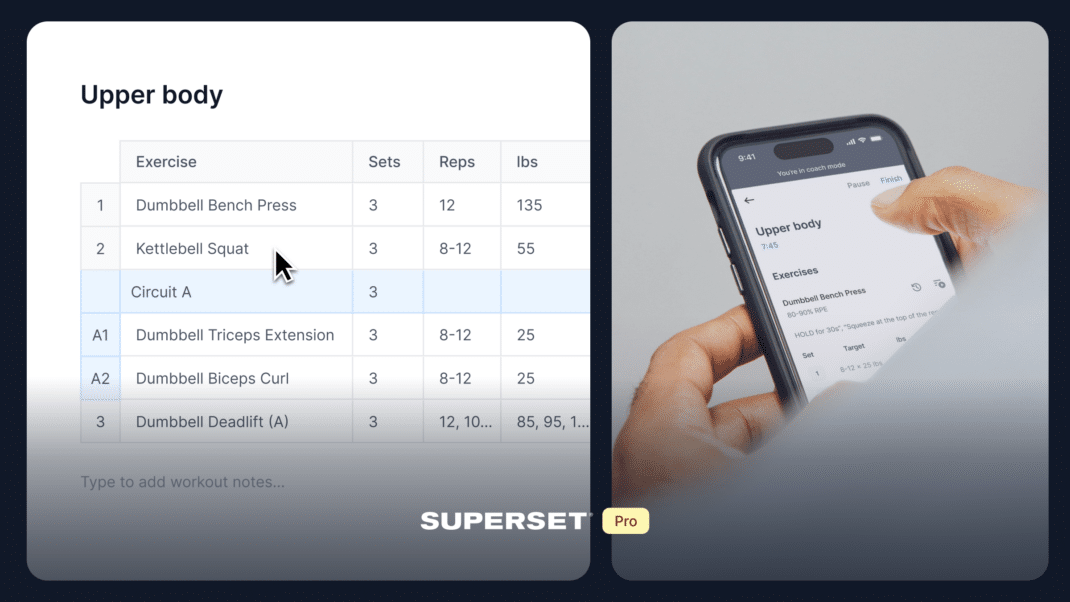Upgrade Relationships and Upgrade Retention
Create bonding opportunities to increase your facility's appeal to its members.
Many fitness facilities focus on getting new members in the door, providing a basic orientation and setting them free—free to slowly lose interest in attaining their fitness goals and coming to the gym. This pattern occurs frequently, affecting the facility’s attrition rate.
Don’t let that happen to your business! The key to retaining members is to make them feel welcome so they remain regularly active. Fostering a feeling of belonging can transform your fitness facility into something more than just a place to go after work to exercise for an hour and then head home.
A supportive, close-knit environment goes a long way toward promoting loyalty and habitual attendance. Learn how to create this environment by rewarding members and encouraging personal interaction, both between the staff and members and among the members. This formula is the key to long-term retention and, ultimately, long-term profits.
Fostering Staff–Member Relationships
Forming friendships with staff helps clients feel they are part of the overall team and not just numbers on a balance sheet. Staff should not only know each member’s name but also make an effort to talk with members each time they come in; the idea is for the staff to know everyone on a personal level. In addition, staff should regularly circulate throughout the facility, shaking hands with members and offering assistance and guidance. The point is to make people feel they belong to an organization that cares about them as individuals.
Try these additional strategies to cultivate relationships between your staff and members.
Plan social fitness activities. A fun way to facilitate bonding is to organize fitness outings and adventure trips. A full-day whitewater rafting trip, a morning biking tour, a boot camp at the local park or a new-member 5K can initiate valuable social interaction while providing a great workout.
Throw a member appreciation party. To achieve a big turnout, allow members to bring a guest. They are more likely to attend if they can bring a spouse or friend. The plus is that you can show nonmembers how fun your club is, and it may turn them into paying members.
Provide superior customer service. Of course, a responsive and experienced staff plays a crucial role in developing a supportive environment. Employees should be available to answer questions about fitness, nutrition and memberships, both in person and over the phone.
Develop a rapport. Post pictures and bios of staff members on the main bulletin board. Members will learn employees’ names and know whom to approach with specific fitness, training or facility-related questions. Further this affinity by sending thank-you cards to members who refer friends or congratulations cards to those who have achieved a fitness goal.
Fostering Member–Member Relationships
Increasing interaction among members helps people get to know one another, so your fitness facility becomes a meeting place for friends in addition to a place to work out. The goal is to build reciprocal social relationships among individuals; this encourages connection and trustworthiness (Hardy et al. 2006). The following activities encourage members to mingle.
Organize special clubs. Individualized groups help members meet like-minded members. Examples include clubs for beginning exercisers, women only, men only, bikers, runners and new moms—you get the picture. An organized buddy system is another useful tool for new members who may not know anyone at your gym.
Recognize achievements publicly. Acknowledging the triumphs of your members increases their feeling of belonging and enables them to encourage each other, inspiring them to continue their efforts. Have a bulletin board that boasts members’ accomplishments (ask permission before posting information about a member). For example, “John Smith completed a 5K charity walk” or “Amy Jones lost 15 pounds.” Dedicate a section to members’ birthdays, and even develop a “member of the month” program. For all of these ideas, include members’ photos as often as possible.
Create leagues. Based on your facility’s existing amenities, you can create specific leagues. How about basketball, tennis or swimming? Organize a schedule so that these groups meet regularly to play their specific sport. Teams can be competitive or recreational, depending on the members’ desires.
Reward Your Members
Rewarding members goes a long way to making them feel appreciated and letting them know they’re part of a supportive environment. Here are several creative ways to regularly reward members.
Play a game. Set up a game where members earn points for certain activities, such as taking a fitness class, attending a nutrition seminar, meeting with a personal trainer or providing a referral. At the end of each month, award prizes to the three members with the highest point totals. Prize might be T-shirts, water bottles or gym bags branded with the facility’s logo. A fun challenge for members, this game also provides you with free advertising.
Run special competitions. Create certain themes that tie in with seasons, holidays or sporting events (e.g., March Madness, the Olympics). Contests should last 4–6 weeks (any longer than this and members may lose interest). People love to see how they’re improving, so put up big, bright visuals, such as a colorful chalkboard or dry-erase board, displaying each member’s progress.
Provide rewards for yearly enrollment anniversaries. Movie tickets, gift certificates to local restaurants and personalized gym towels are inexpensive ways to show your appreciation for continued membership. This practice demonstrates that you value your members’ dedication to their own fitness and to your club.
Additional Strategies
Use any of these simple tactics to further the sense of community within your facility.
Consider offering community classes once a week. Schedule community classes (either fee-based or free), and invite your members to bring their friends and coworkers. This is a great way for others—possibly future members—to experience the strength of your program and your teachers (Cissne 2011).
Put out a suggestion box. While suggestion boxes are not a new idea, they make members feel that their opinions are important. Design a bulletin board highlighting member suggestions and the action taken—to demonstrate that the facility is responsive and the suggestion box is not a proverbial “black hole.”
Conduct member surveys. Member surveys make clients feel that they’re valued and they’re a part of the fitness facility’s continued success. Include questions regarding cleanliness, staff effectiveness, programs and classes.
Maintain the facility. Keeping the location clean and well-maintained is crucial to creating an inviting and comfortable environment. Chipped paint, broken equipment and dirty locker rooms will have members running for the door. Do routine inspections of the physical building, furniture, equipment, sound system and lighting. Little things make big impressions.
An inspirational and supportive environment encourages members to adhere to their fitness goals and maintain their membership over the long term. Set your fitness facility apart by making it a second home where members feel appreciated, inspired, and surrounded by friends. Let members know they belong at your club, and they’ll continue to do just that.
Are you a club owner or manager? Gain, train and retain world class staff with the fastest growing health club software in the world: https://www.ideafit.com/clubconnect
Building Community: Real-World Examples
Here’s how several health clubs have successfully created welcoming communities within their facilities.
Fitness Formula Clubs. These Chicago-area fitness facilities offer unique amenities, like basketball leagues and group training programs for marathons and triathlons. Plus, their locations are open 24 hours a day.
Gainesville Health and Fitness Center. Located in Gainesville, Florida, this club implements an “Eagle of the Moment” employee recognition program. It also offers separate coed and women-only clubs.
Bally Total Fitness. This nationwide chain offers a Total Martial Arts program to teach tae kwon do and hapkido to children, teens and adults. This special program allows the whole family to work out together.
The Edge Fitness Clubs. These facilities are located throughout southern Connecticut. For each of their personal trainers, the clubs print 4-by-6-inch cards providing a name, a photo and a detailed description of the trainer’s health and fitness background. The cards are available at the front desk for members to take home for future reference.
References
Cissne, R., 2011. Six steps to build the yoga community in your health club. Club Industry, June 5.
Hardy, S., et al. 2006. Image isn’t everything. Athletic Business, May 1.






